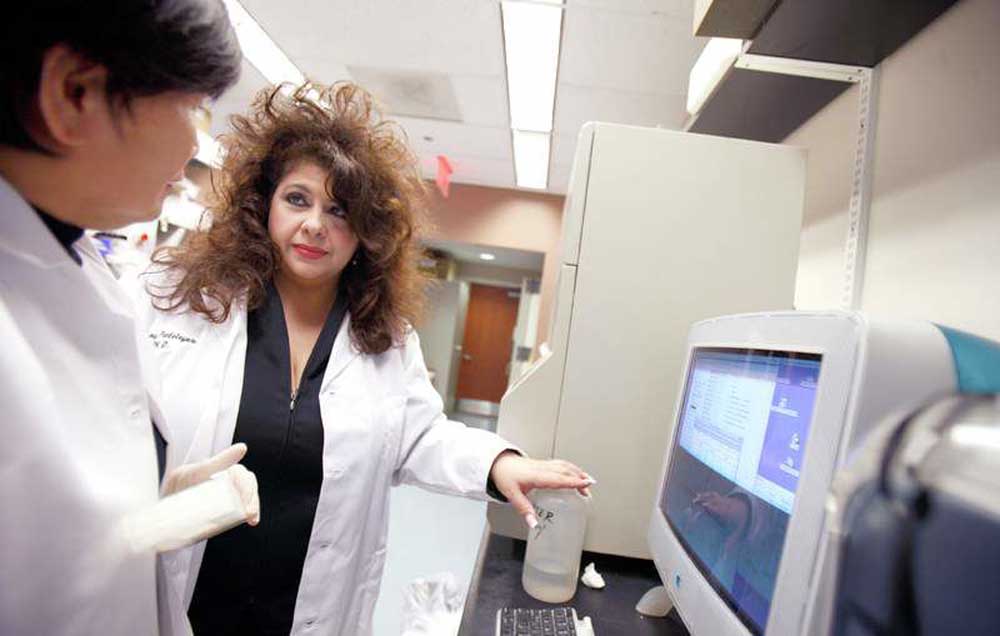New promise for hair growth
Published 5:00 am Thursday, October 24, 2013

- Dr. Angela Christiano, a hair geneticist and dermatology professor at Columbia University Medical Center, is the senior author of a study that promises to add hair to a person's scalp.
Scientists have found a new way to grow hair, one that they say may lead to better treatments for baldness.
So far, the technique has been tested only in mice, but it has managed to grow hairs on human skin grafted onto the animals. If the research pans out, the scientists say, it could produce a treatment for hair loss that would be more effective and useful to more people than current remedies like drugs or hair transplants.
Present methods are not much help to women, but a treatment based on the new technique could be, the researchers reported Monday in Proceedings of the National Academy of Sciences.
Currently, transplants move hair follicles from the back of the head to the front, relocating hair but not increasing the amount. The procedure can take eight hours, and leave a large scar on the back of the head. The new technique would remove a smaller patch of cells involved in hair formation from the scalp, culture them in the laboratory to increase their numbers, and then inject them back into the person’s head to fill in bald or thinning spots. Instead of just shifting hair from one spot to another, the new approach would actually add hair.
The senior author of the study is Dr. Angela Christiano, a hair geneticist and dermatology professor at Columbia University Medical Center in New York, who has become known for her creative approach to research.
In the current study, Christiano worked with researchers from Durham University in Britain. They focused on dermal papillae, groups of cells at the base of hair follicles that give rise to the follicles. Researchers have known for more than 40 years that papilla cells from rodents could be transplanted and would lead to new hair growth. The cells from the papillae have the ability to reprogram the surrounding skin cells to form hair follicles.
But human papilla cells, grown in culture, mysteriously lose the ability to make hair follicles form. A breakthrough came when the researchers realized they might be growing the cells the wrong way.
One of Christiano’s partners from Durham University, Dr. Colin Jahoda, noticed that the rodent papilla cells formed clumps in culture, but the human cells did not. Maybe the clumps were important, he reasoned. So, instead of trying to grow the cells the usual way, in a flat, one-cell layer on a petri dish, he turned to an older method called the “hanging drop culture.”
That method involves putting about 3,000 papilla cells — the number in a typical papilla — into a drop of culture medium on the lid of a dish, and then flipping the lid over so that the drops are hanging upside down.
“The droplets aren’t so heavy that they drip off,” Christiano said. “The force of gravity just takes the 3,000 cells and draws them into an aggregate at the bottom of the drop.”
The technique made all the difference. The cells seem to need to touch one another in three dimensions rather than two, to send and receive the signals they need to induce hair formation.
The researchers took papilla cells from seven men who were undergoing hair transplants, cultured them in hanging drops and then injected them into human skin grafted onto mice. Not just any human skin: to put their ideas to a rigorous test, the researchers made the grafts from a type of skin that is normally 100 percent hairless — foreskins from circumcised infants. A technique that can grow hair on a foreskin has a pretty good chance of growing it on a person’s head, they reasoned.
Indeed, new hair follicles grew in five of the seven grafts, and tests proved that they were human follicles and not mouse ones.
The success, though encouraging, is just a first step, Christiano cautioned. “At the moment we’re only getting quite a small hair,” she said.
One avenue for further research will be to look at why, in the papilla cells that produced the hair follicles, molecular profiling found that only 22 percent of the genes that normally function in these cells were turned on.
“We were a little surprised by how few,” Christiano said. “We thought more would be needed.” Perhaps, she said, if more genes could be turned on in the transplanted cells, more hairs, or better quality ones, might result.
If the research works out, scientists say they could produce a new treatment more effective than current remedies for hair loss.






